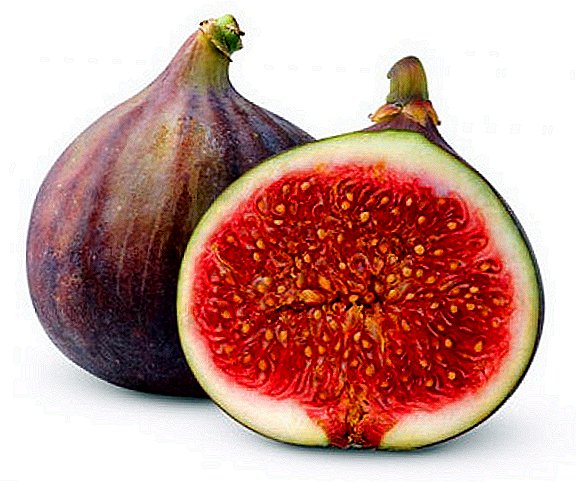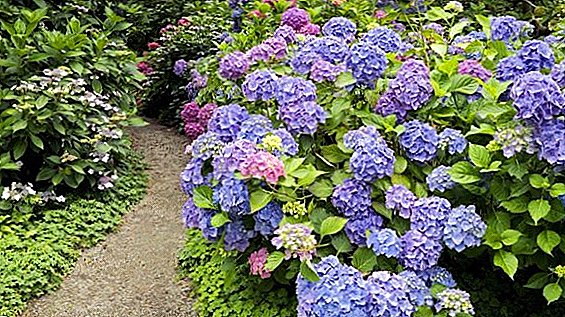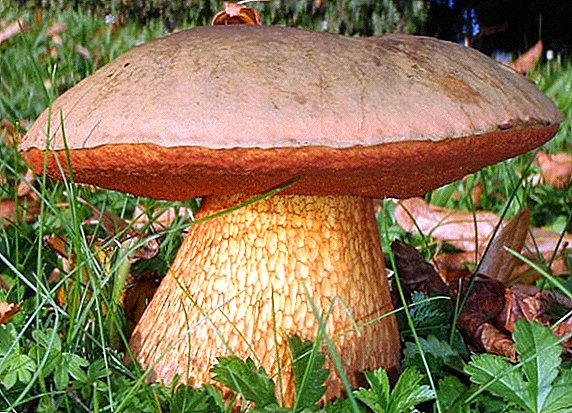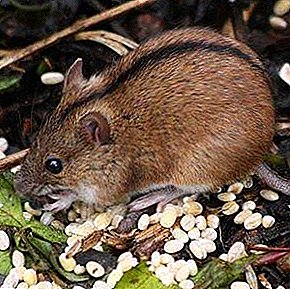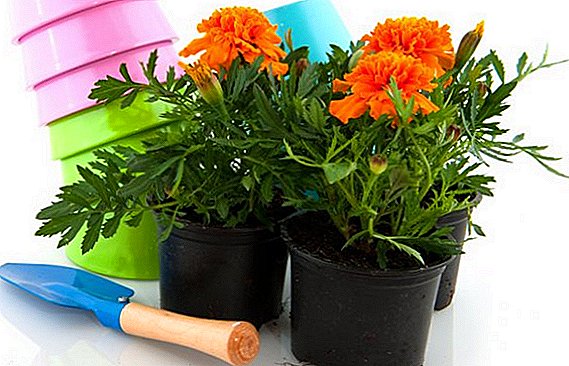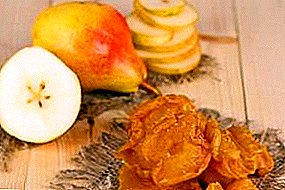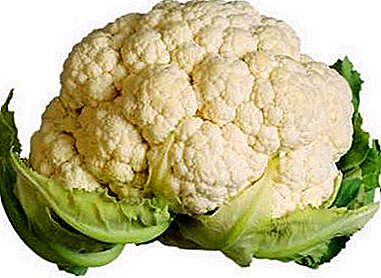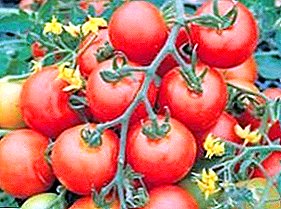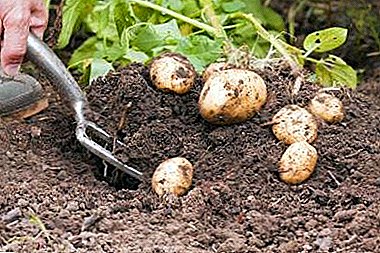
Unlike many other cultures, potatoes make little sense to feed during the growing season - because at this time, valuable substances will no longer be sufficiently absorbed. The main thing - is to choose the right fertilizer for the root when planting.
Potatoes - one of the most common and favorite vegetables in our country. Although he appeared in Russian gardens relatively recently (at the end of the 7th century) and did not immediately deserve the love of farmers, it is now difficult to imagine his absence. In order for the harvest of this tasty vegetable to be healthy and rich, it is necessary to fertilize during different periods of potato growing season. This article describes in detail how to properly fertilize potatoes for a good harvest.
Why soil is fed?
This perennial tuberiferous plant of the Solanaceae family very intensively consumes nutrients from the soil, since its roots are not very developed, and the tubers grow large.
How and when to fertilize and what kind of fertilizer?
Feed the culture at different times, pursuing certain goals with each fertilizer.
Before landing
 Fertilizers made in preparing the beds for potatoes improve the germination of tubers, help develop a strong root system, and accelerate plant growth, regardless of the nutritional content of the parent tuber.
Fertilizers made in preparing the beds for potatoes improve the germination of tubers, help develop a strong root system, and accelerate plant growth, regardless of the nutritional content of the parent tuber.
Top dressing for potatoes is needed in larger quantities than the plant can absorb, since not all nutrients reach the bush: some weed pick up some fertilizers, some are dissolved in the ground.
Top dressings for potatoes bring in the fall and spring:
- In the autumn - per square meter of the site 6 buckets of fresh manure or humus, 30-35 g of superphosphate, 15-20 g of potassium sulfate. Fresh manure pereperet over the winter, superphosphate gives nutrients rather slowly and will have time to digest in the soil.
- In the spring, it is necessary to remove excess moisture from the site under the potato (forming ridges or digging out ditches for water flow along its border) and provide it with nitrogen (contained in large quantities in manure).
Variants of spring dressings:
- a bucket of manure, 20-30 g of ammonium nitrate, potassium sulfate and nitrophoska;
- a bucket of manure, 50-60 g nitrophoska and a glass of ash;
- 10 kg of manure, 20 g of potassium sulfate and ammonium nitrate, 30 g of superphosphate and dolomite flour according to the instructions (depending on the acidity of the soil).
Organic fertilizers can be infected with pests, therefore, fertilizing can only be done with mineral ones: in the fall, one part of double superphosphate and two parts of potassium sulphate, in the spring - 3 kg of NPK per hundred.
When landing
It is very important to choose the right fertilizer when planting, because the harvest depends on their quantity and quality. Make them necessary in the wells, but not throughout the site, then the plants will receive the maximum amount of nutrients.
Necessary fertilizers (amount per well):
- rotted manure - 200-250 g, can be applied with mineral dressings;
- chicken manure solution (prepared at the rate of 1:15, 1 l is added to the well);
- vegetable waste - half a liter per well, put under the tubers and on top of them, you can make with mineral dressings;
- wood ash 150-200 g, can not be mixed with other fertilizers;
- complex mineral fertilizers - Kemira potato (15-20 g per plant), nitrophoska (20 g per well).
Fertilization in the hole: step by step instructions
You can plant potatoes manually or using a tiller / special planter. Tubers for planting previously germinated.
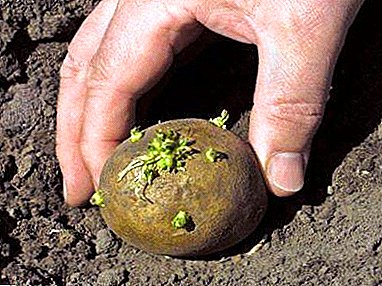 Spun the ground with a fork or Ploskorez Fokin, lifting the layers of the soil, but not turning them. Abundantly watered.
Spun the ground with a fork or Ploskorez Fokin, lifting the layers of the soil, but not turning them. Abundantly watered.- Loosen the soil with a rake to a depth of 5-7 cm, leveling the surface and breaking lumps.
- Mark the area on the cord, maintaining a width between the rows of 70 cm.
- Make the wells to a depth of 10 cm at a distance of 20-30 cm.
- Lay the necessary fertilizer in the hole, pouring the land.
- Put in each hole on the tuber sprouts up.
- The holes are covered with earth and the surface is raked.
After sprouting
After sprouting and reaching a height of 20-30 cm, potatoes are spud. To make the procedure more useful, you need to feed the plant in front of it.
You can use chicken droppings:
- Pour one part of the litter with 15 parts of water.
- Let it brew for 24 hours.
- Feed in the amount of 1 l per bush after abundant watering.
Suitable and mineral fertilizer:
- Dissolve 20 g of urea in a bucket of water.
- Pour the potatoes under the root (1 l per plant).
Read more about how to feed potatoes during and after planting in the hole, read here, and in this article you will find even more recommendations on fertilizer application during these periods.
Before flowering
Top dressing accelerates the growth of foliage, adds nutrients to the soil in return for the plants already consumed, increases potato resistance to late blight, scab and other diseases.
During this period, you should not make nitrogen fertilizer, otherwise you can get powerful tops and small tubers.
Potassium and phosphorus are necessary for the plant before flowering.:
- 20 g of potassium sulfate, 60 g of ash in a bucket of water;
- 60 g of superphosphate per bucket of water.
The required amount of fertilizer is applied under the root.
Root and foliar methods
It is important to distinguish between root and foliar (on leaves) feeding of potatoes, since they have different goals and different terms of application.
| Application Features | Root | Foliar |
|---|---|---|
| Timing |
| During flowering and growth of tubers (in summer) |
| purpose | Make the soil nutrient enough for the plant. |
|
| Benefits |
|
|
| disadvantages | Harder to make | Expensive |
Fertilizer at the root was sufficiently discussed at the beginning of the article, therefore, we will dwell in more detail on the composition and characteristics of foliar dressing. Fertilizer is carried out during the active growth of leaves and flowering..
Foliar
It is important to organize the fertilization of the plant with the following mineral fertilizer:
- a teaspoon of ammonium nitrate and potassium chloride;
- tablespoon of superphosphate;
- a quarter of a teaspoon of copper sulfate for the prevention of fungal diseases.
 Apply ready fertilizer like this:
Apply ready fertilizer like this:
- All components are dissolved in warm water in an amount of 10 liters, insist 3 hours.
- Add another 1 liter of water and pour it into a spray bottle.
- Spray the potatoes over the leaves.
During the period of active growth of tubers they fertilize potatoes:
- manganese (improves the taste of potatoes);
- boron (increases the density of tubers).
It is best to use the specialized granulated fertilizer "Mag-Bor":
- In a bucket of water dissolve a tablespoon of granules.
- Mix thoroughly.
- Spray the potato bush after the complete formation of the leaves at the rate of 10 liters of solution per 3 m2 landings.
When making foliar fertilizing it is important to follow certain rules:
- it is possible to spray only in cloudy weather in order to avoid burn of wet leaves;
- process only grown healthy bushes, since the area of leaf plates they have more, and the density of the sheet - less;
- feed early varieties more often, as they react more intensively to foliar nutrition.
After harvest
Potato is a crop that takes a lot of nutrients from the soil.. In addition, crop rotation in relation to him most often impossible, so after harvesting it is necessary to restore the fertility of the field for future plantings. For this plant siderats are planted.
Mustard would be an ideal green manure for this crop. It increases the vegetative mass in just three weeks. When the frosts come, the mustard sprouts will fall down, and in the spring they can be laid in the ground as fertilizer.
Conclusion
Potatoes are grown throughout our country. The composition of the soil and the climate for planting potatoes in different areas are different. Not everywhere conditions are comfortable for culture.. However, the use of fertilizers, both mineral and organic, will allow to obtain a high yield in all regions where this tasty vegetable is grown.


 Spun the ground with a fork or Ploskorez Fokin, lifting the layers of the soil, but not turning them. Abundantly watered.
Spun the ground with a fork or Ploskorez Fokin, lifting the layers of the soil, but not turning them. Abundantly watered.